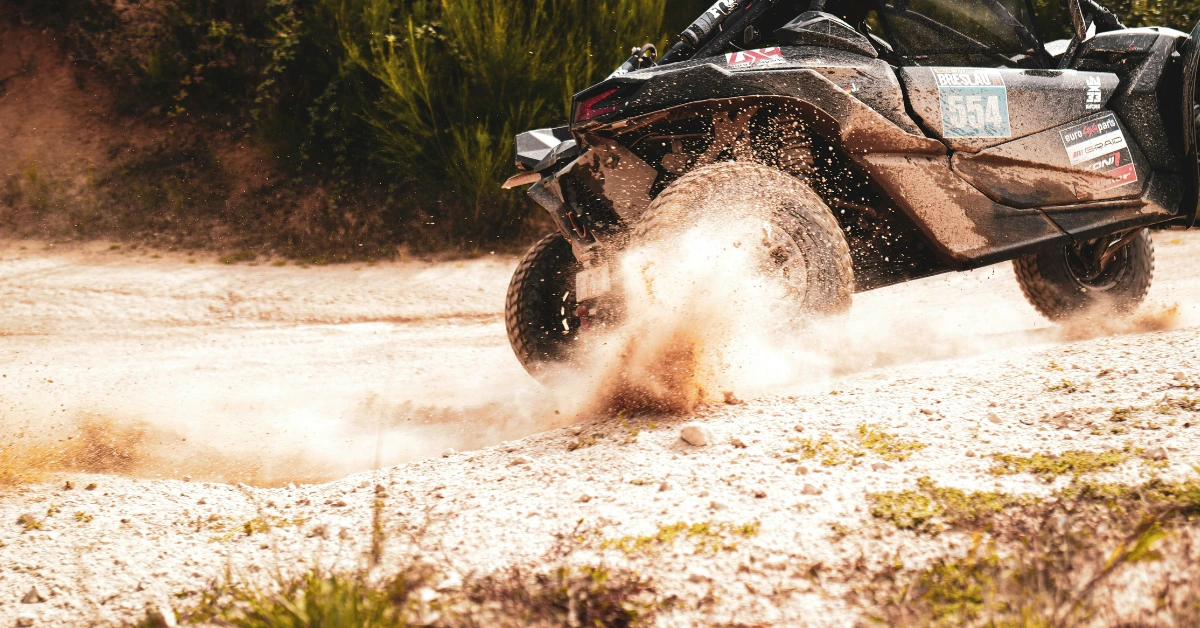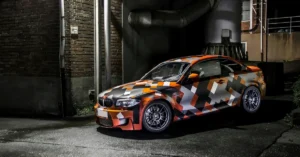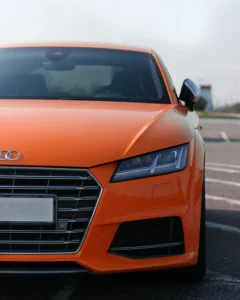We, as rally enthusiasts or competitors, know too well that choosing the right set of Rally Car tires is as crucial as the skill of the driver behind the wheel.
Each rally tire has to be engineered to perfection, balancing durability with performance.
Tires designed for tarmac rally events and those made for gravel rally stages have characteristics that cater to specific conditions.
Types of Rally Car Tires
When we think about rallying, one of the first things that stands out is the variety of terrains these fearless cars face.
Rally car tires are known for peak performance on diverse surfaces. They range in tread patterns, compounds, and constructions to excel on gravel, mud, snow, and tarmac.
Let’s explore the different models in the rally tire family.
Gravel Tires
Gravel stages are known for their loose and abrasive surfaces, which demand tires with sturdy tread blocks and reinforced sidewalls. A soft compound is essential for traction, whereas a hard compound better resists wear on abrasive gravel.
Gravel tires are designed to effectively expel debris and maintain grip.
Snow and Ice Tires
When the rally heads to wintry landscapes, snow and ice tires come into play. These are characterized by special tread patterns to provide traction on slippery surfaces.
Some are even fashioned with studs to bite into ice, while others rely on deep tread blocks to navigate through snow.

Tires for Wet and Damp Surfaces
Challenges like rain and mud are tackled by tires tailored for wet and damp surfaces. The key here is efficient water displacement to prevent hydroplaning.
These tires often feature a soft to medium compound and a specific tread pattern to maintain traction in wet weather conditions.
Tires for Dry Conditions
On the flip side, tires for dry conditions prioritize precision and stability. Generally known as slicks, these have a smooth surface with minimal tread pattern to maximize contact with the road. Here, a harder compound ensures durability and sustained performance in the heat.
All-Round Rally Tires
Sometimes we encounter rallies with unpredictable weather, and that’s where all-round rally tires shine.
These are versatile, offering a balance across different weather conditions. These medium compound tires adapt to changes in the environment, making them a safe choice for varied road use.
Tire Design and Structure
When we discuss rally car tires, we’re delving into the crux of rallying performance. It’s the tire design and structure that equip these beasts to tackle unpredictable terrains at breakneck speeds, ensuring they maintain paramount grip and traction.
Tread Patterns and Blocks
The tread patterns and blocks on rally car tires are significantly bolder and more pronounced than on regular tires.
This configuration allows for better contact with the surface, enhancing both lateral grip and forward traction as the tires cut into loose substrates.
Sidewall Technology
Sidewalls on rally tires aren’t just regular tire sides; they are reinforced fortresses. They’re often bolstered with steel belts or other resistance materials to resist puncture and withstand the relentless assault of off-road hazards.
Tire Compounds
Rally tires come in different compounds, such as soft, medium, and hard. These compounds influence the tire’s overall performance and grip. A softer compound might provide better traction but could wear down quicker, while harder compounds can endure more but might not offer the same level of adhesion.
Tire Sizing and Pressure
Finally, the size and pressure of rally car tires vary significantly to best suit the conditions they face. Variables like the tire’s contact patch are meticulously calibrated for optimal performance, with sizes and pressure adjusted to achieve the ideal balance between grip and durability.

Rally Tire Performance
When it comes to rally car tires, we understand the pivotal role they play in racing performance, influencing everything from grip on diverse surfaces to durability against tough conditions.
Let’s see what makes a tire excel in the world of rally racing.
Grip and Traction
For tires, grip and traction are critical contributors to success on varying road surfaces.
Rally car tires are designed with specialized compounds that ensure exceptional adherence to the terrain, whether it’s gravel, mud, or asphalt. These tires offer significant lateral grip for improved stability during sharp turns and achieve low levels of grip loss even under extreme conditions.
Braking and Speed
Breaking efficiency and speed go hand in hand with the performance of rally car tires. Tire suppliers craft tires that enable drivers to decelerate efficiently without losing control.
This precision contributes to a car’s speed, allowing it to navigate the course swiftly while maintaining safety.
Durability and Resistance
Lastly, rally car tires must possess durability and resistance.
They’re engineered to resist puncture and withstand the grueling abuse on the rally stage. The durability of these tires ensures they don’t just perform exceptionally; they maintain their integrity for the duration of the race.

Choosing the Right Tires for Conditions
When we talk about rally car tires, it’s all about matching them to the road surface and weather conditions we’re up against.
We understand that whether it’s dry asphalt or a muddy trail, the right tire choice is crucial for optimal performance and safety.
Considering Weather and Surfaces
Dry conditions
For a clear, sunny day, we generally look for tires with a hard compound, which can endure the heat and provide consistent grip on road surfaces like tarmac.
Wet and mud
When the skies open up, or we’re faced with soggy earth, soft compound tires with deep grooves are our best bet to channel water and mud away.
Snow and loose surfaces
Here, a dedicated rally tire with wide spacing between tread blocks helps us cut through and clear snow efficiently. On loose gravel or sand, the wider blocks also help us find grip by digging in deeper than a regular tire would.
Understanding the Impact of Tire Compounds
Soft compound
It’s the choice for colder weather or slippery conditions, giving us that extra stickiness and flexibility but wearing out faster.
Medium compound
This is our versatile choice, striking a balance between soft and hard compounds. It’s a suitable go-to for varied or unpredictable conditions where we might face a mix of dry and wet surfaces.
Hard compound
Optimal for high temperatures and abrasive surfaces, these tires will last longer and are less prone to wear on rough rally stages.
Tire Brands and Suppliers
We know that tire choice is crucial in the world of competitive racing, and brands like Pirelli and Michelin lead the parade with offerings that push the limits of technology and performance.

Pirelli’s Rally Tires
Pirelli, one of the most recognizable tire suppliers in the World Rally Championship (WRC), caters to rally drivers with a bigcatalog. Their commitment is reflected in both the development of their tires and the performance they deliver on gravel and tarmac stages alike.
Michelin’s Rally Offerings
Michelin – a name synonymous with motorsport excellence – delivers cutting – edge tire technology for the rally circuit.
Their rally motorsport tires are engineered to handle the rugged demands of rally stages, contributing to their reputable presence in the rally universe.
Other Leading Tire Manufacturers
While Pirelli and Michelin are giants, other manufacturers like Hoosier and BF Goodrich also excel in producing specialized rally car tires. These companies offer a diverse range of options to fit different vehicles and rally conditions.
FAQ
What tires do rally cars use?
For rallying, there are two types of tyre available, gravel or tarmac. These divide further as some gravel tyres are aimed for hard packed or loose surfaces.
What tyres do WRC cars use?
Pirelli won the previous tender supplying tyres to all WRC categories from 2021-2024, returning to rallying’s top level for the first time since 2010. Autosport understands Michelin, MRF and Hankook are in the running to secure the WRC tyre contract, beginning from 2025.
Are rally tires street legal?
Technically most “for Rally Only” tires are not legal for street use, but there are unwritten exceptions like when you are getting to or from a stage. You don’t want to use rally tires as your daily driver tire though. They are absolute crap on pavement.
What about you? Are you driving Rally in your Free Time or even as a full-time job? If so, tell us more about you and your Job, whether in the Comments or via Mail.
Till then see you next time when it says again…
Let´s Ride!








